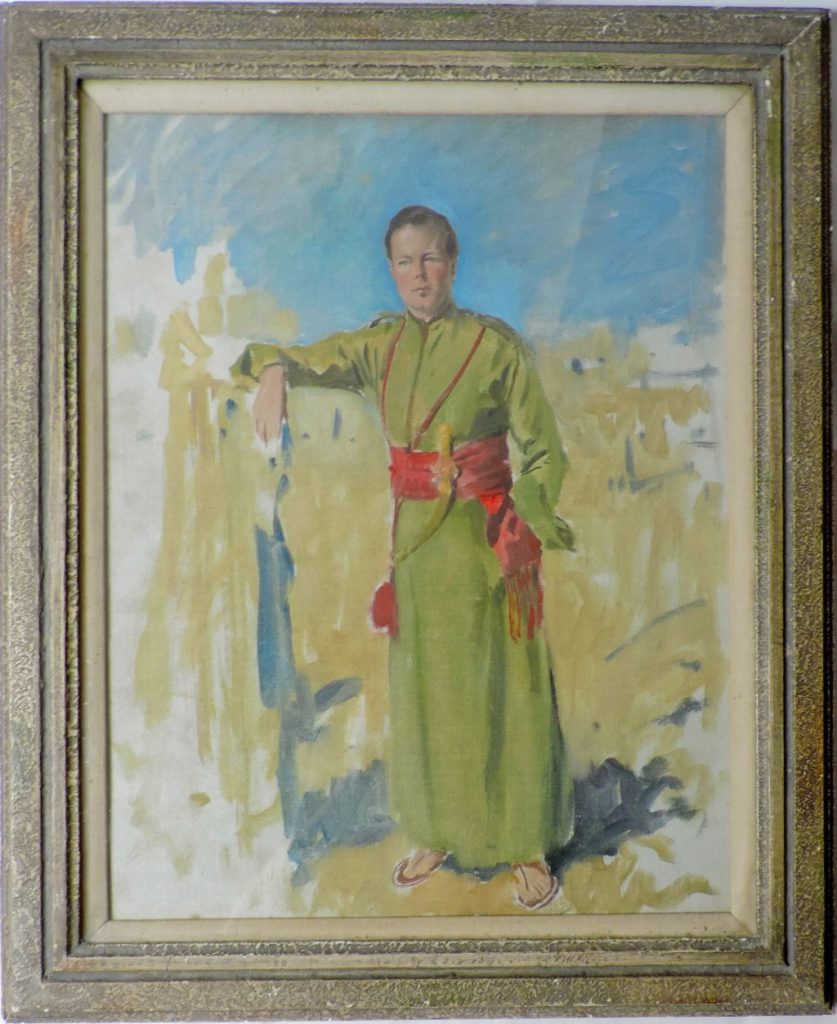Who Was Christopher Tower?

Christopher Thomas Tower was a diplomat, a poet, and a scholar. He was born in 1915 in Essex and was the only son of Christopher Cecil Tower and Dorothy Cynthia Tower, née Surtees. He was the 9th successive eldest son to be named Christopher Tower. He had a sister, Pamela Sophia Tower, and two half-brothers, David Patrick Maule Ramsay and James Surtees Maule Ramsay.
His father, diplomat Christopher Cecil Tower (8th), was killed in action in France three months after his birth, at which point he inherited his father’s estate, wealth, and a collection of family portraits and other artworks dating back to around 1710. His mother married her second husband, Patrick Maule Ramsay, in 1917.
He did not grow up in his family’s ancestral home, Weald Hall, instead travelling due to his stepfather’s work as a diplomat, and later retirement in Lisbon, where Christopher spent time as a child. While not being occupied by the family, Weald Hall was used by the army during World War 2, and was later demolished in 1950 due to damage from a fire. The site of the estate is now known as Weald Country Park, and is owned by Essex County Council.
He attended Eton College from 1928 to 1933, and then Christ Church, Oxford from 1934 to 1937, where he studied English and History as an undergraduate, and Arabic and Persian literature as a post-graduate. He was the founder and the first secretary of the Eton College Archaeological Society, which led him to the Middle East where he further developed his interest in Arabic and Persian literature.
He would spend his school holidays travelling due to his stepfathers diplomatic work, and developed an interest in travel and diplomacy. He later became a foreign diplomat himself, living and working abroad throughout his life, constantly travelling for work and for leisure. He primarily travelled around the Middle and Far East, which provided inspiration for his poetry.
During his diplomatic career, he worked as private secretary to Sir Basil Newton, the British ambassador in Baghdad, in the late 1930’s. During the 1950’s he worked as chief political adviser to the Amir of Cyrenaica, who later became King Idris of Libya in 1951, until 1958 when he retired and decided to dedicate his time to travel and writing. Over the course of his life he wrote a total of 9 books of poetry.
He often returned to a house he shared with one of his half-brothers in Madrid, but after his brother’s death in 1977 Christopher moved to Athens where he established a more permanent residence. While in Athens he developed a close friendship with his neighbours Leo Marshall and Norah Dunn, who owned a cottage in Bramshaw, New Forest. In the late 1980’s he visited the New Forest for the first time, and after often visited Leo and Norah there, developing a deep interest in and appreciation for its history and natural beauty. He wished for his trustees to allocate funds from his wealth to benefit the preservation of the history of the forest. He is buried in the All Saints Church graveyard in Minstead in the New Forest, near the grave of Sir Arthur Conan Doyle.
The Christopher Tower Foundation was established in order to benefit causes of importance to Christopher Tower after his death in 1998. The foundation divided his wealth between several causes, of which the first was Christ Church, Oxford, which was gifted with an endowment for the establishment of a ‘Junior Research Fellowship in Greek Mythology’, and a ‘Fellowship in the Art of Writing Poetry in the English Language’. These were both set up in order to ensure that subjects of importance to Christopher Tower were given appropriate funding and attention.
Another way in which the world of poetry benefitted was through the creation of the Tower Poetry Competition, a yearly poetry competition open to all students between the ages of 16 and 18 attending a British Sixth Form college, with the first competition held in 2001.
In order to benefit the New Forest, which Christopher Tower had grown to love late in life, his foundation gave a grant for the continued growth and development of the library at the New Forest Heritage Centre in Lyndhurst, which was given the name ‘The Christopher Tower New Forest Reference Library’. The library is located on the upper floor of the New Forest Heritage Centre. Its mission is to collect and preserve resources and objects relating to the history of the New Forest, including resources on the New Forest’s establishment as a royal hunting ground, its military history, biographies of notable people, and a wide variety of other areas of interest.
Find more information at: https://nfknowledge.org/people/tower-christopher/
Babey, G. (2003) ‘Christopher Tower: Who Is or Was He?’ New Forest: The Country Magazine, (Summer 2003, issue 19), pp. 63.
Class Number: N.101
Shelf Mark: FF11/14.3
Tower, A. and Kinglake-Tower, R. (2003) The Christopher Tower Collection of Family Portraits, Pictures and Miniatures. London, The Burlington Magazine Publications Ltd.
Class Number: N.920 TOW
Shelf Mark: FF11/49.4
Walsh, J. (2011) ‘Author’s pounds 5m bequest provides poetic justice for Oxford University’, Independent. Available at: https://www.independent.co.uk/news/author-s-pounds-5m-bequest-provides-poetic-justice-for-oxford-university-1193816.html [Accessed September 2021].

